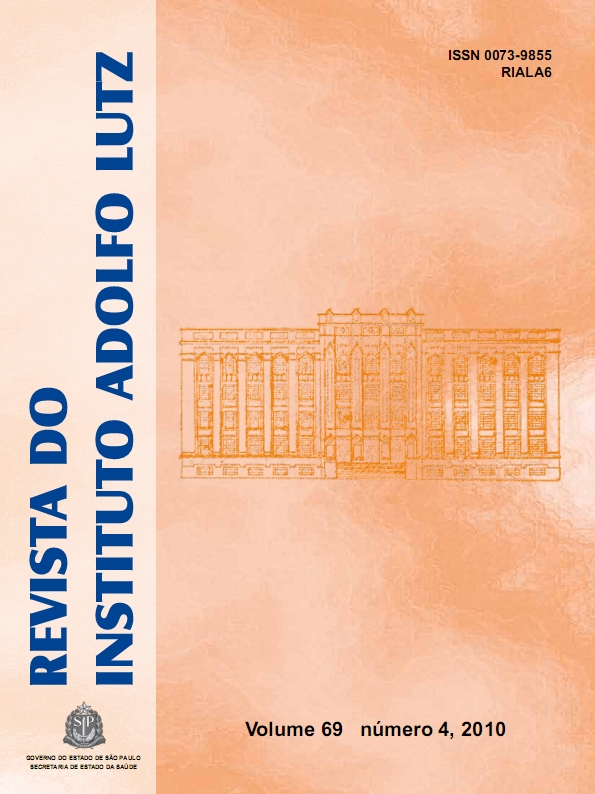Resumo
Neste estudo os valores de lipídios totais e das frações lipídicas dos ovos de avestruzes foram comparados com os dos ovos de galinha in natura. Os lipídios totais foram quantificados pela técnica de Folch e Soxhlet. O colesterol foi quantificado pelo método colorimétrico e por HPLC utilizando-se coluna de C18, fase móvel de acetonitrila:isopropanol (80:20) e detecção fixada em 210 nm. Os ácidos graxos foram determinados por cromatografia gasosa. Diferenças significativas foram observadas entre os resultados obtidos pelos métodos de extração de lipídios totais da gema e do ovo integral de avestruz. Não houve diferença significativa nos resultados obtidos pelos dois métodos de determinação de colesterol. A gema in natura de ovo de avestruz apresenta maior percentual de ácidos graxos mono e poli-insaturados e menor percentual de ácidos graxos saturados, quando comparados a gema de ovo de galinha in natura. Apesar da gema de ovo de avestruz apresentar maior conteúdo lipídico, a quantidade de colesterol entre os dois tipos de ovos foi semelhante. A gema de ovo de avestruz in natura contém uma melhor proporção de ácidos graxos mono, poli e saturados, que pode ser considerada como gordura de melhor qualidade nutricional.Referências
1. Machado FF, Coimbra JSR, Rojas EEG, Minim LA, Oliveira FC, Sousa RCS. Solubility and density of egg white proteins: Effect of pH and saline concentration. LWT-Food Sci Tech. 2007; 40: 1304-7.
2. Kritchevsky SB. A Review of Scientific Research and Recommendations Regarding Eggs. J Am Coll Nutr. 2004; 23 (90006): 596-600.
3. Brum AAS. Métodos de extração e qualidade da fração lipídica [dissertação de mestrado]. Piracicaba (SP): Escola Superior de Agricultura “Luiz de Queiroz”; 2004.
4. Folch J, Lees, M, Slaon-Stanley GN. A simple method for the isolation and purification of total lipids from animal tissues.J Biologycal Chem. 1957; 226 (1): 497-509.
5. Bragagnolo N, Rodriguez-Amaya DB. Avaliação comparativa de três métodos para determinação de colesterol em gema de ovo. Arq Biol Tecno. 1993; 36 (2): 237-51.
6. Mazalli, MR. Efeito do processamento térmico e tempo de estocagem na formação de óxidos de colesterol e na alteração da composição de ácidos graxos em ovos. [tese de doutorado]. Campinas (SP): Universidade de Campinas; 2006.
7. Di Meo C, Stanco G, Cutrignelli MI, Castaldo S, Nizza UM. Physical and chemical quality of ostrich eggs during the laying season. Br Poultry Sci. 2003; 33(44): 386-90.
8. Sussi C, Superchi P, Sabbioni A, Zambini EM, Beretti V, Zanon A. Relatioship between nutrition and reproductive efficiency in ostrich (Strtuthio camelus): yolk fatty acid content and fertility. Ann Fac Med Vet. 2003; 23(1):253-60.
9. Bragagnolo N, Rodriguez-Amaya DB. Determinação de colesterol em carne: comparação de um método colorimétrico e um método por cromatografia líquida de alta eficiência. Rev Inst Adolfo Lutz. 2001; 60(1): 53-7.
10. Horbánczuk JO, Sales J, Ziebra G, Reklewski T, Celeda T, Kozaczynski K. Lipid cholesterol content and fatty acid composition of ostrich eggs as influenced by subspecies. Arch Geflügelkunde.1999; 63(5): 234-6.

Este trabalho está licenciado sob uma licença Creative Commons Attribution 4.0 International License.
Copyright (c) 2010 Jailane de Souza Aquino, João Andrade da Silva
